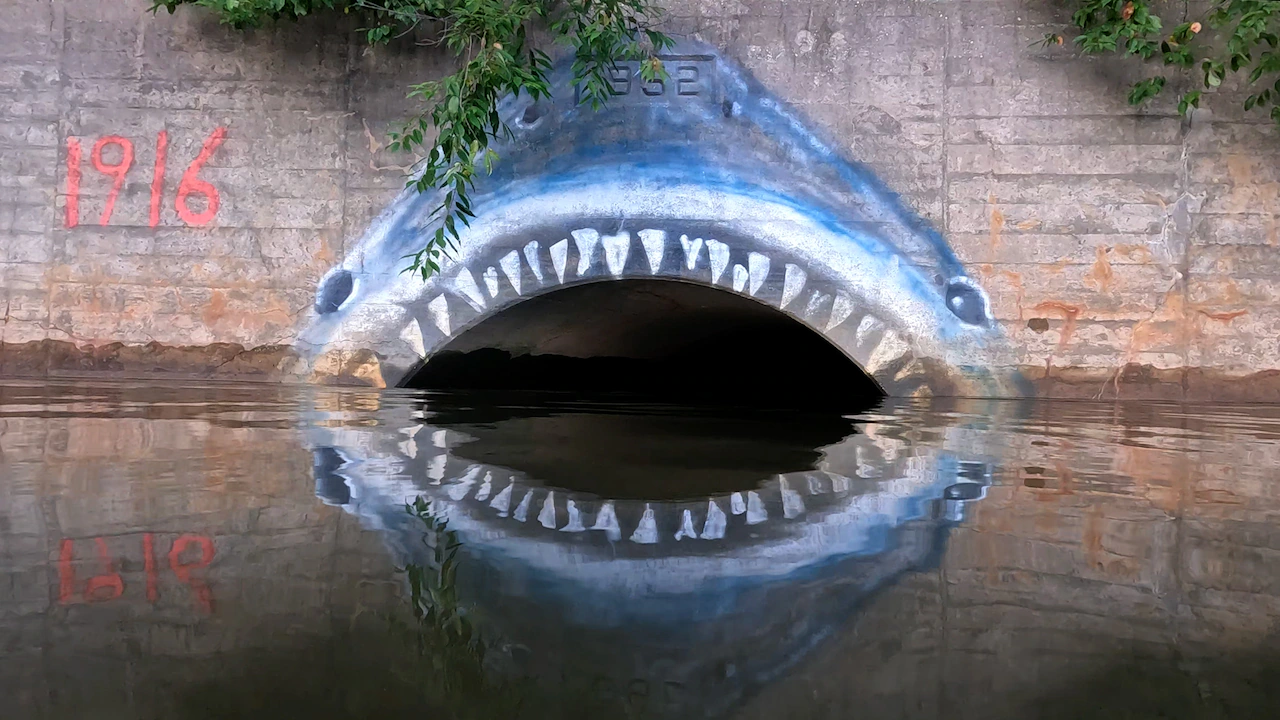Copyright Staten Island Advance

To read Monster sharks have returned to the Jersey Shore. Is it a nightmare or a new golden age?, click here. Peter Benchley thought he had one last shot. So the aspiring novelist from a family of writers pitched a whopper. A great white shark! Terrorizing a beach town! Eating swimmers alive! “Oh gosh, honey,” his widow, Wendy Benchley, remembers thinking, “I just don’t think that’s going to be a really big novel.” But Doubleday picked up the fictional tale, Benchley hunkered down in a makeshift office at a Pennington furnace company and the rest is history. The New Jersey author crafted the opening of the shark book that became the shark movie that became the single most influential piece of shark content in human history. The legend of how sharks became sharks, terrorizing monsters of the sea, is dripping with Jerseyness. New Jersey shaped “Jaws” — with a little help from the infamous 1916 shark attacks that left four dead. Then “Jaws” helped shape New Jersey, cementing it as a great American shark state. “You live in a very, very special place,” said Chris Fischer, founder and expedition leader for OCEARCH, the shark research group that has tagged 20 great whites off the New Jersey/New York coast. And there’s so much more to it than just “Jaws.” America’s most chilling shark attacks, referenced by the fictional Matt Hooper? They happened right here in New Jersey. Frank Mundus, the gregarious New York shark fisherman whose massive great white catch off Long Island grabbed Benchley’s attention, planting the idea about sharks? A New Jersey native who fished out of Brielle. The trailblazing scientist who pioneered efforts to tag sharks as a means of studying them, opening the door for Shark Week, great white shark trackers and probably every National Geographic documentary you’ve ever seen? Yep, a Jersey guy. The Garden State even gave the world Roy Scheider, the Orange native and Rutgers alum who played Police Chief Martin Brody in Steven Spielberg’s 1975 movie, the original summer blockbuster. “It’s New Jersey culture,” said Susan Seguine, a self-described “Jaws nut” from Sewaren who has watched the film an “incalculable’ number of times. “It’s the history.” And it all started 109 years ago in Beach Haven. Benchley long insisted his bestseller wasn’t based on the legendary 1916 attacks, but he “certainly knew” about them while writing it, Wendy Benchley said. There is likely no “Jaws” — book or movie — without the series of terrifying shark attacks at the Jersey Shore, said author Michael Capuzzo, who wishes his own nonfiction book on the attacks had used the subtitle, “The True Story of ‘Jaws.’” Five bathers were attacked in 12 days. One bled out in front of an estimated 500 people. Three were attacked in a tidewater creek. Four of the victims died, including an 11-year-old boy. Shark hysteria gripped the Eastern Seaboard at a time when many scientists believed sharks could never — and would never — tear through the flesh and bone of unassuming swimmers so close to shore. “It was a wake-up call, really, to nature,” Capuzzo said. But New Jersey’s shark story was only beginning. In July 1960, John Brodeur was preparing to ride a wave in Sea Girt when he saw what he thought was a telephone pole floating toward him. It was a massive sand tiger shark that tore the flesh off the 24-year-old’s right leg, forcing doctors to amputate it. “None of us saw the shark,” a man who pulled Brodeur from the water told The Jersey Journal. “But I saw the blood, and I know what that means.” The attack made national headlines, including in the Los Angeles Times, spurring new questions about what lurked in the surf. And it led to pioneering research by shark scientist Jack Casey, who worked for the U.S. Fish and Wildlife Service’s Bureau of Sport Fisheries and Wildlife laboratory at Sandy Hook. “The resort owners were concerned,” Casey, 92, told NJ Advance Media on a call from his home in Rhode Island. So he ran a shark fishing study from Jones Beach in New York to Cape Henlopen in Delaware and made a stunning discovery at the time. He “caught 390-some-odd sharks,” he said, including great whites. “The media was all jingled up about it,” Casey said. “Apparently nobody knew that there were that many sharks around. They had always been there, just never really looked at.” Interest in shark fishing immediately gained steam, Casey said, and he recruited volunteer fishermen to help him with his fledgling shark-tagging efforts in 1962. He used tags that could be implanted in a small plastic capsule with instructions written in five languages so fishermen could record when and where a shark was caught before releasing it. Then came the legendary catch by Mundus, the Long Branch native known as the inspiration for the “Jaws” character, Quint. Mundus, an eccentric charter boat shark hunter since the 1950s, led a fishing trip that landed an estimated 4,550-pound great white off Long Island in 1964. Benchley read the news reports, and the big catch sparked an idea. “I thought to myself, ‘What would happen if one of those came around and wouldn’t go away?’” he later wrote. The world was forever changed. “Jaws” was the No. 1 film in America for 14 weeks. It was the highest grossing movie in history at the time. More than 75 million Americans flocked to see it in theaters. Watching the film became a rite of passage for every little kid who came of age in the ‘70s and ‘80s and spent the next summer refusing to go into the ocean (and maybe even the pool). “Ever since I’ve seen that movie, I don’t go in the water,” said Dennis Seguine, 72, Susan’s husband and fellow “Jaws” fanatic. “I’m scared, you know, because they say the sharks go in shallow water. So I’m not going there.” The “Jaws” phenomenon didn’t invent fear of sharks. But it amplified that fear — with an ominous soundtrack and kids and dogs and Quint eaten alive — intensifying a worldwide slaughter that had already been underway for generations. “Jaws” defined how humans thought of sharks and why they hunted them to near oblivion with such fervor. “Jaws shook all the nuts out of the trees,” Mundus told The Star-Ledger after Benchley’s death in 2006. “Before the movie, I couldn’t get another boat to go shark fishing. After the movie, everyone wanted to be a shark fisherman.” Meanwhile, Casey was flooded with letters and phone calls from parents. Is it safe, they asked, for their children to go in the water? “You have very few animals on the planet that actually, on occasion, catch and eat a human being,” Casey says. “You’re not going to be attacked by a crazy bear in New York (City), but you can go to Jones Beach or you can go to Asbury Park and go in the water … In the back of your mind, you know there’s something out here that really could be dangerous.” But the impact wasn’t all negative, Wendy Benchley said. Her husband received hundreds of letters from people inspired to learn more about sharks. Benchley and Mundus, who died in 2008, both became shark conservationists. Casey’s Cooperative Shark Tagging Program expanded and has tagged about 300,000 sharks since the 1960s. His research provided the road map for the next generation of shark experts, who helped pinpoint the location of a great white nursery south of Long Island that Casey first encountered. “This is the perfect place for the lion of the ocean to drop off her pup,” Fischer said. “The holy grail of the work is locating the nursery and identifying where they live.” Our obsession with sharks brings hundreds of tourists to Matawan Creek every summer, where history buffs and shark enthusiasts take a walking tour of the 1916 attacks that occurred there. “We love our monsters, right?” Wendy Benchley said. “We like being frightened, and therefore, we want to learn more about them.” For better or worse, sharks and New Jersey are woven together. In June, the Seguines arrived on Ideal Beach in Middletown for a 50th anniversary screening of “Jaws.” They were among dozens on the beach who didn’t realize the advertised showing had been canceled. “I’m so sad,” Susan Seguine said. “What we’re going to do is go home and watch it.”



